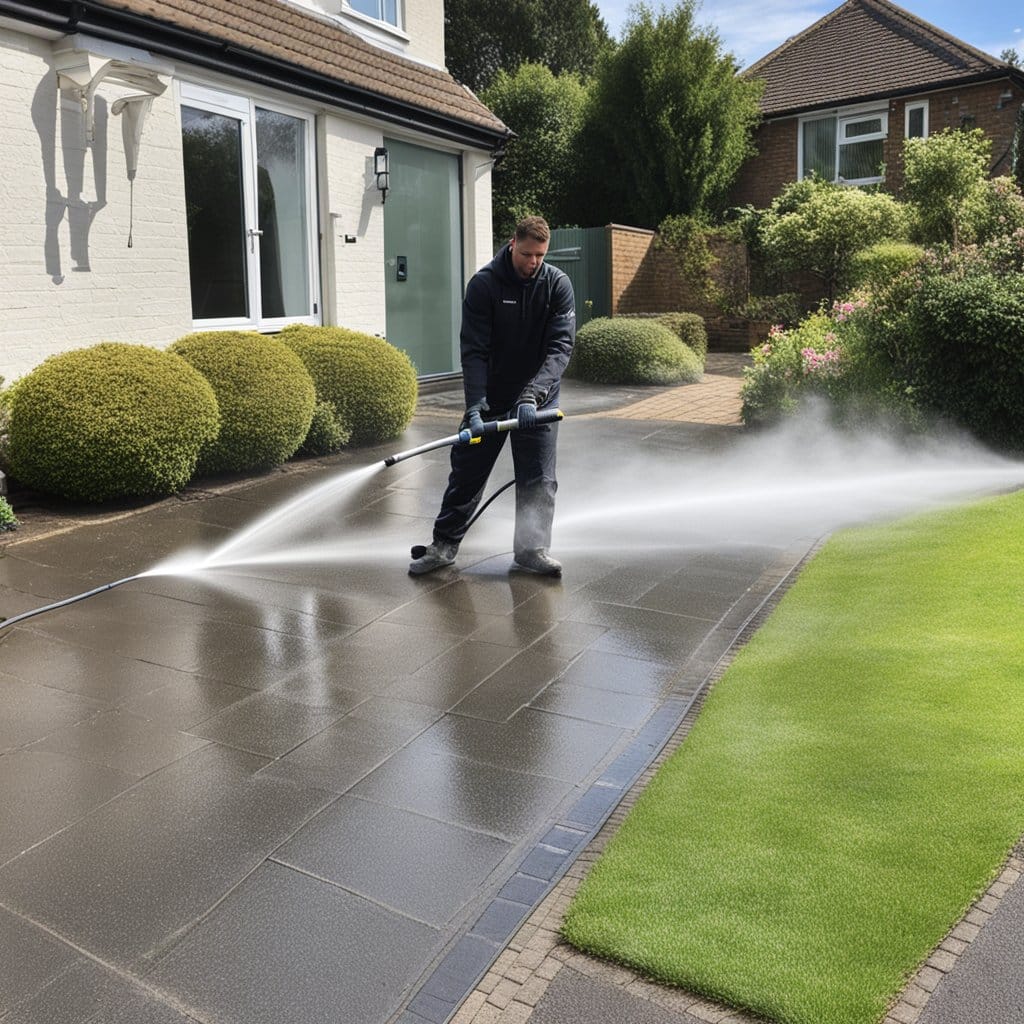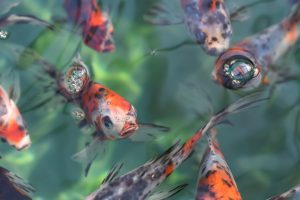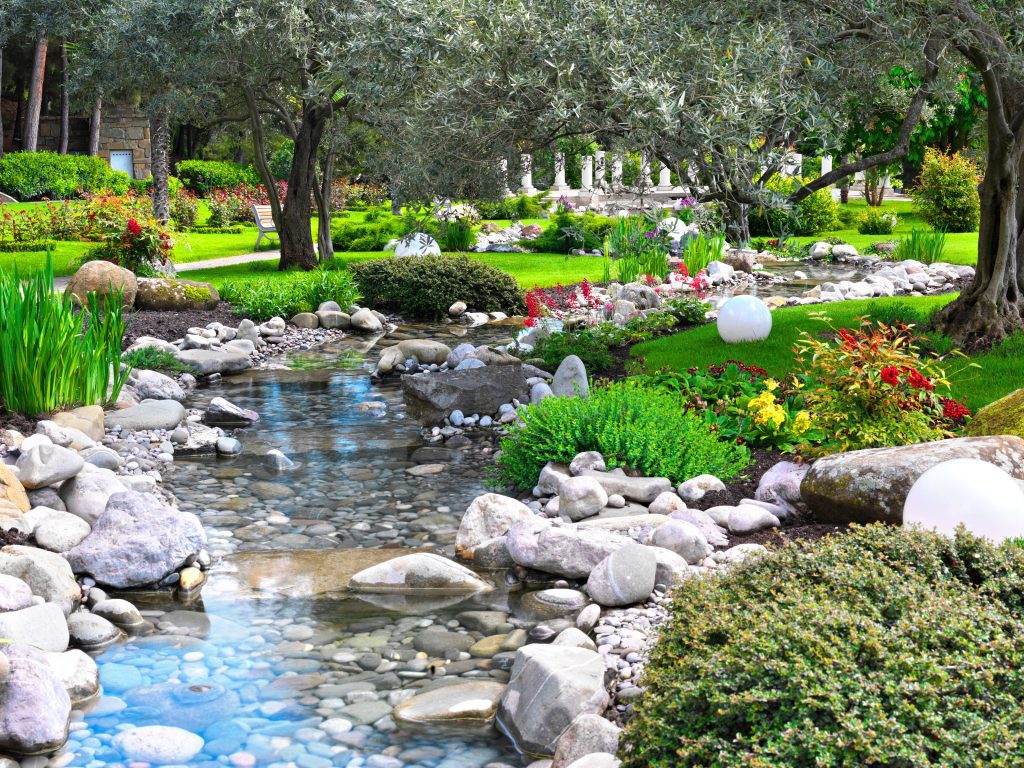
Should I Put Gravel in the Bottom of My Pond? (Pros and Cons)
Should I put gravel in the bottom of my pond? This is a common question among pond owners. Gravel can offer protection for the pond liner, support beneficial bacteria, and enhance the pond’s natural look. However, it also has potential drawbacks, such as muck accumulation and cleaning challenges. This article will cover the pros and cons to help you make an informed decision about whether you should I put gravel in the bottom of my pond.
Key Takeaways
Gravel in ponds protects the liner from damage and enhances visual appeal while promoting beneficial bacteria growth for a healthier ecosystem.
Potential drawbacks of gravel include muck accumulation, cleaning challenges, and safety risks for koi fish, requiring consistent maintenance.
Alternatives to gravel, such as bare liners, sand, pebbles, and specialized pond liners, offer lower maintenance options without sacrificing pond function.
Benefits of Using Gravel in Your Pond
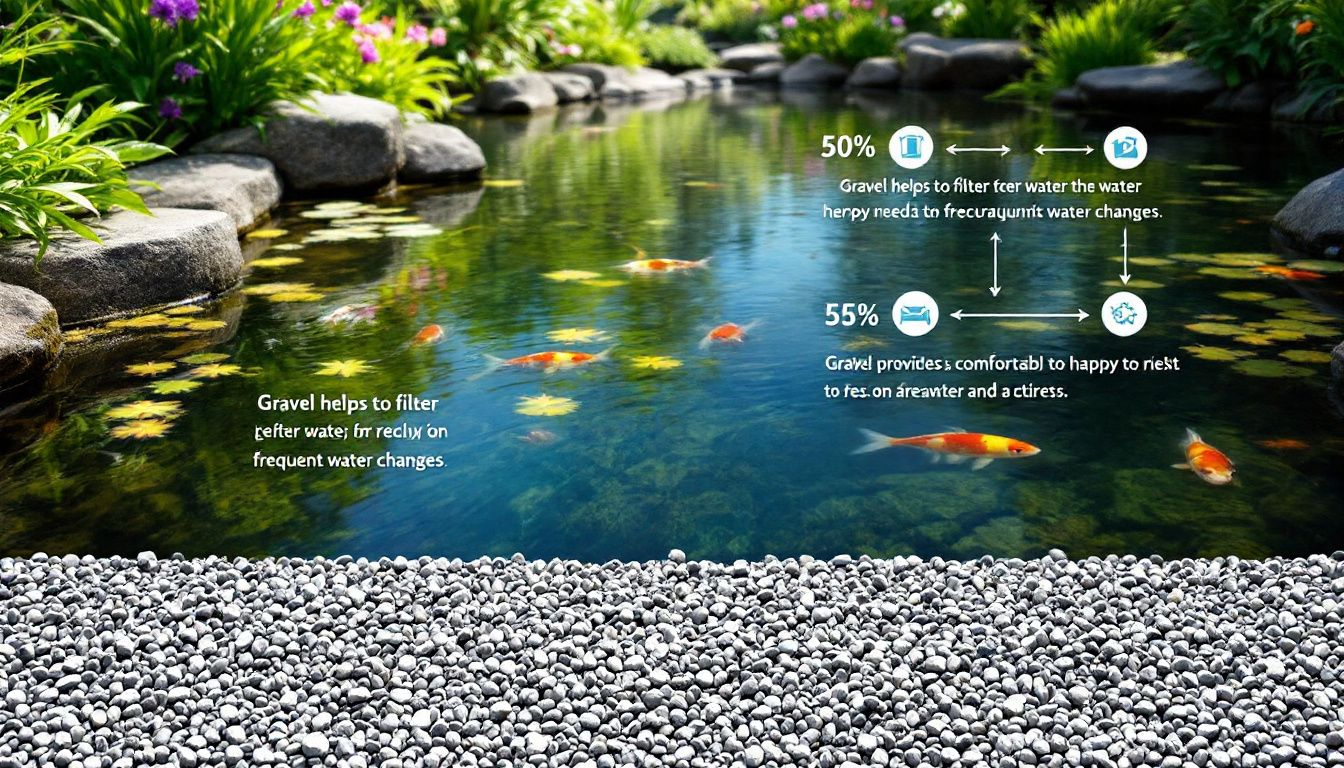
Adding gravel to your pond can bring several benefits that enhance both its functionality and appearance. From protecting the pond liner to supporting beneficial bacteria growth, gravel offers multiple advantages that can contribute to a thriving pond environment.
Liner Protection
One of the key benefits of adding gravel to your pond is the protection it provides to the pond liner. The pond liner is crucial for preventing water from seeping into the ground, but it can be vulnerable to damage from sunlight and physical objects.
Gravel acts as a shield, protecting the liner from harmful UV rays that can degrade its material over time. Moreover, gravel serves as a buffer against physical damage, preventing sharp objects from puncturing or tearing the liner. This added layer of protection ensures the longevity of your pond liner, reducing the need for frequent repairs or replacements.
Enhancing Natural Look
Another significant advantage of using gravel in your pond is the enhanced natural look it provides. Unlike bare liner ponds, which can appear artificial and out of place, a gravel bottom creates a more organic and appealing visual.
Gravel blends seamlessly with the surrounding environment, making the garden pond look like a natural part of your garden or backyard. This natural feel is not only aesthetically pleasing but also contributes to a more ecologically balanced pond.
The overall aesthetic appeal of a gravel-bottom pond can significantly enhance the beauty and tranquility of your outdoor space.
Beneficial Bacteria Growth
Gravel also plays a crucial role in promoting the growth of beneficial bacteria in your pond. These bacteria are essential for maintaining water clarity and overall pond health. Gravel provides multiple surfaces for these beneficial microorganisms to colonize, facilitating their growth and biological activity.
As these bacteria break down harmful ammonia and other organic matter, they help keep the pond water clear and free from algae blooms. Gravel fosters a robust population of beneficial bacteria, creating a healthier and more balanced pond ecosystem.
Potential Drawbacks of Adding Gravel
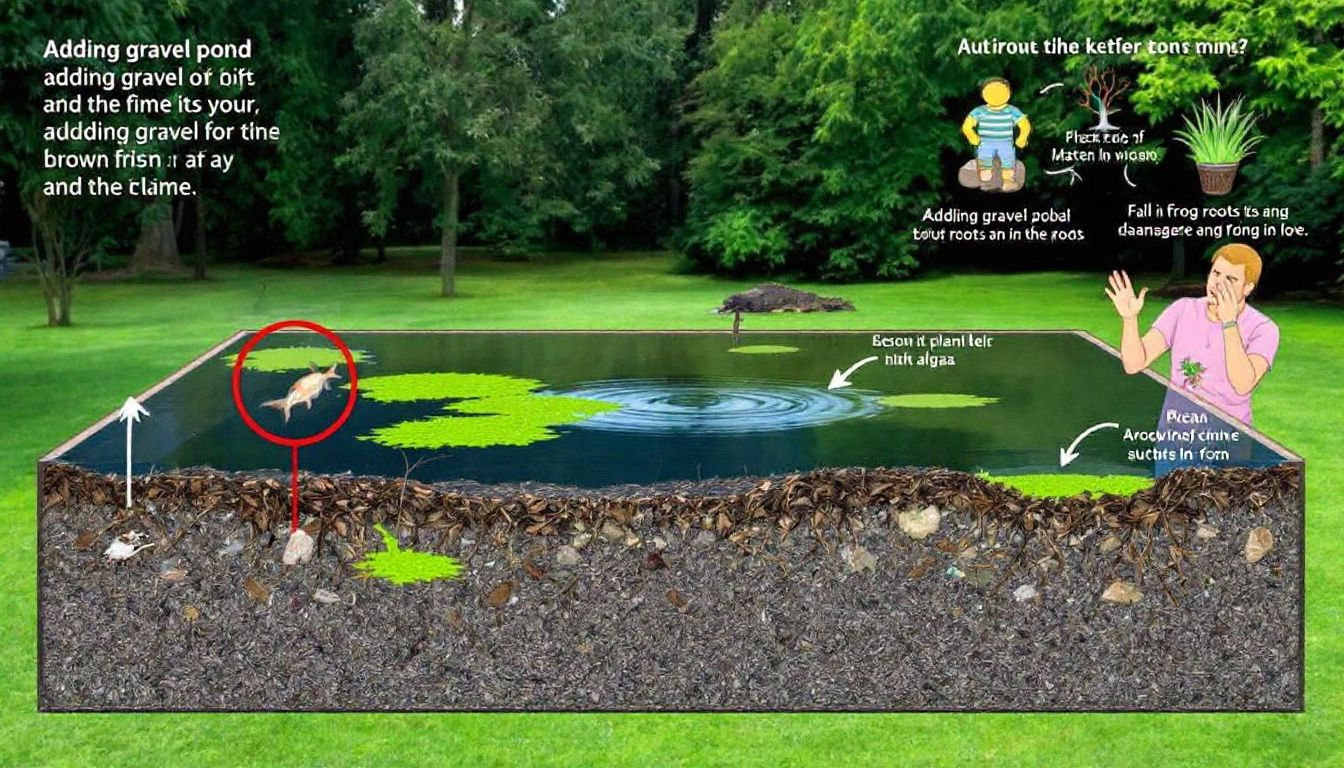
While gravel can offer numerous benefits, it also presents some potential drawbacks that pond owners should consider.
These challenges can affect maintenance efforts and the overall health of the pond.
Muck and Debris Accumulation
One of the primary concerns with using gravel in ponds is its tendency to trap fish waste and other debris, leading to muck accumulation. Without proper management, this build-up can degrade water quality and create an unsightly pond bottom. The muck generated by trapped waste and debris can also contribute to poor water conditions.
To prevent these issues and maintain a healthy pond environment, regular cleaning and maintenance are necessary.
Cleaning Challenges
Maintaining a gravel-bottom pond can be more challenging and time-consuming compared to a bare liner pond. Gravel requires more frequent and intensive cleaning to remove trapped debris and maintain water quality. Pond owners typically need to perform a full clean-out of the gravel every one to three years, which can be a labor-intensive process.
Regular maintenance ensures gravel-bottom ponds remain healthy and function properly, despite the challenges.
Koi Fish Safety
Gravel can pose specific safety risks to koi in a koi pond. Koi may mistake small gravel pieces for food, which can lead to ingestion and potential health hazards. Additionally, sharp gravel can injure koi, making smooth stones a safer alternative.
While gravel-related injuries are relatively rare, it’s important to consider these risks and take appropriate measures to protect your fish. Using smooth-edged materials instead of sharp gravel can help mitigate these risks and ensure a safer environment for your koi.
How Gravel Affects Pond Ecosystem
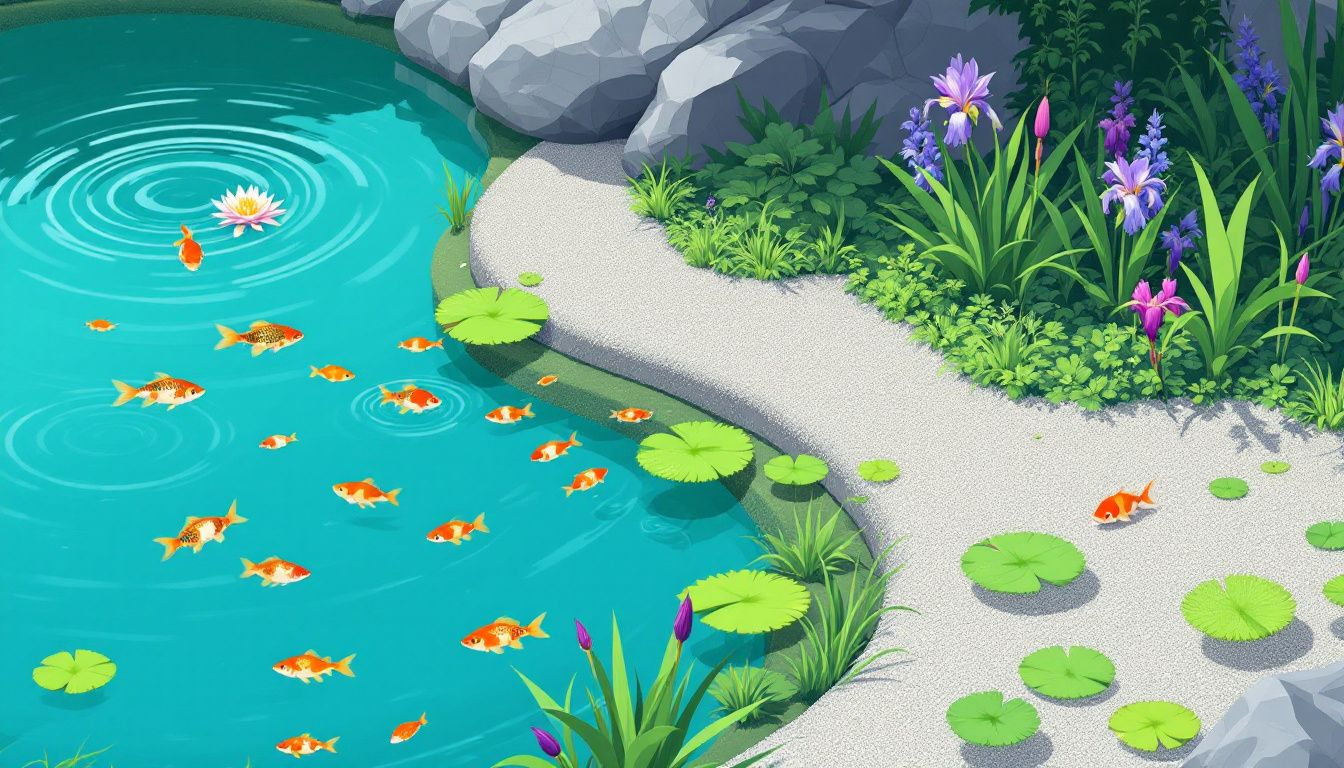
Gravel can have a profound impact on the pond ecosystem, influencing various biological and ecological processes. Knowing these effects aids pond owners in making informed decisions about incorporating gravel into their ponds.
Supporting Aquatic Plants
Gravel provides a stable substrate for aquatic plants, allowing them to anchor securely in the pond. This stability is crucial for the health and growth of aquatic plants, as it protects them from disturbances caused by fish.
Healthy plant life not only enhances the aesthetic appeal of the pond plants but also contributes to a balanced ecosystem by providing habitat for various aquatic organisms. Gravel supports plant life, fostering a more diverse and resilient pond environment.
Biological Filtration
The porous nature of gravel provides ample surface area for beneficial bacteria to colonize, enhancing biological filtration in the pond. These nitrifying bacteria are crucial for breaking down harmful ammonia and other organic matter, improving water quality.
By supporting these beneficial microorganisms, gravel helps maintain a healthier pond ecosystem through natural filtration processes. This biological activity is essential for keeping the pond water clear and free from harmful compounds.
Improving Water Quality
Gravel plays a significant role in improving water quality by reducing sludge accumulation at the pond’s bottom. This natural filtration process helps maintain clear water and reduces the levels of harmful compounds, such as ammonia. High water quality is essential for the health and well-being of aquatic life in the pond.
Promoting beneficial bacteria growth and reducing sludge, gravel contributes to a cleaner and healthier pond environment.
Alternatives to Gravel for Pond Bottoms
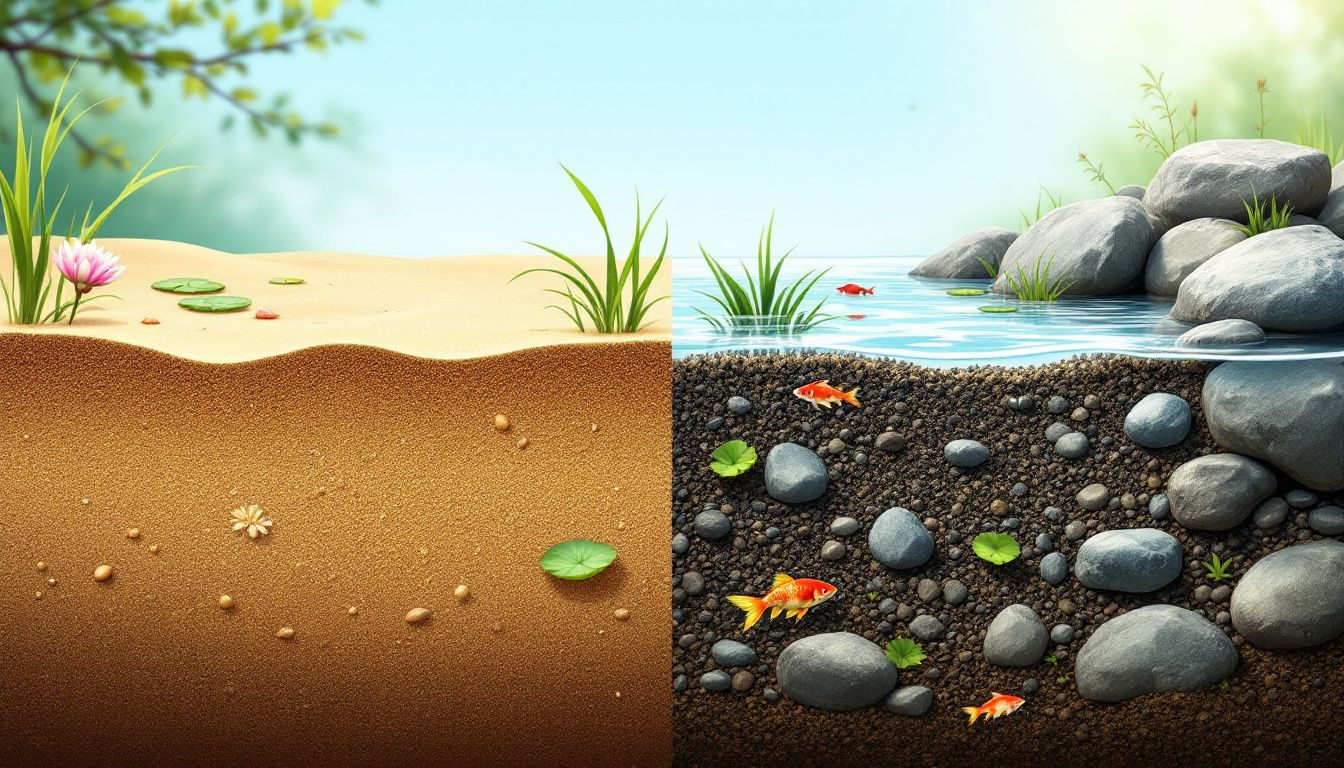
For those who might be hesitant about using gravel, there are several alternatives that can also provide effective pond bottom solutions.
Each of these options comes with its unique benefits and drawbacks.
Bare Liner Ponds
Bare liner ponds are a straightforward and low-maintenance option for pond owners. Without the presence of rocks or gravel, these ponds are easier to clean and manage. However, they may lack the visual appeal and natural look that gravel can provide.
However, bare liner ponds provide a practical solution for those prioritizing ease of maintenance over aesthetics.
Sand and Pebbles
Sand and pebbles offer another alternative to gravel for pond bottoms. Sand can enhance drainage and provide a softer substrate, while pond rocks can support beneficial bacteria growth and create a natural look.
These materials can be easier to maintain compared to gravel, though they may require more frequent cleaning to prevent debris accumulation. Sand and pebbles offer a versatile and visually appealing option for pond owners seeking alternatives to gravel.
Specialized Pond Liners
Specialized pond liners are designed to mimic natural substrates, integrating seamlessly with the pond environment. These advanced liners offer enhanced durability and protection for the pond’s structure. They also facilitate easier maintenance by preventing muck accumulation often associated with natural substrates.
Besides functionality, these liners enhance the pond’s visual appeal by closely replicating natural materials.
Maintenance Tips for Gravel-Bottom Ponds
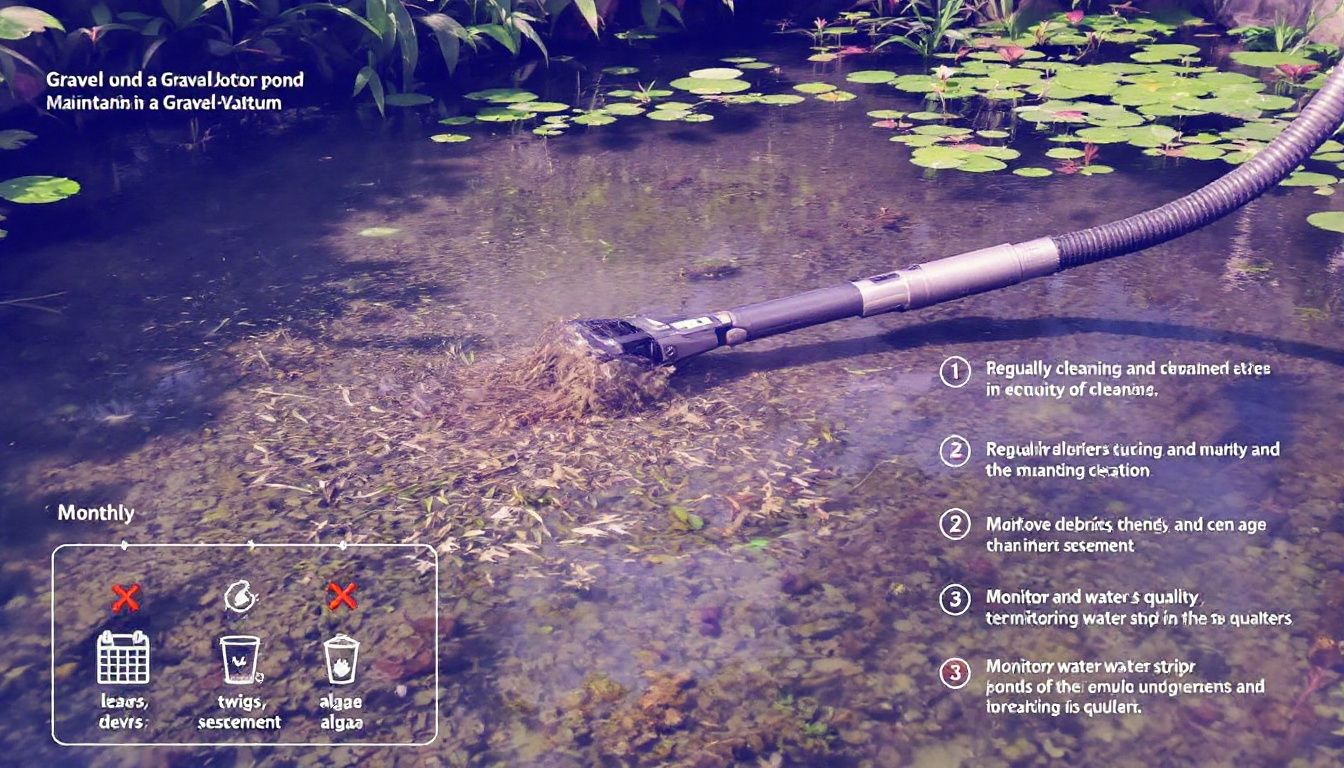
Regular upkeep and seasonal adjustments are required to keep a gravel-bottom pond healthy and attractive.
Consider these practical tips for effectively managing your gravel-bottom pond.
Regular Cleaning Schedule
Establishing a regular cleaning routine is essential for maintaining the health of your pond ecosystem. A consistent schedule for removing organic waste helps improve water quality and prevent debris buildup.
Cleaning gravel-bottom ponds every one to three years, along with bi-weekly vacuuming, helps maintain a clean environment.
Using a Pond Vacuum
A pond vacuum is an effective tool for cleaning gravel in your pond. Using old pond water to disturb the gravel and dislodge debris can help maintain beneficial bacteria while achieving efficient cleaning.
Using a pond vacuum regularly sustains a healthy pond ecosystem.
Seasonal Care
Adjusting your maintenance practices according to the seasons is vital for supporting the pond’s ecological balance. Seasonal adjustments in cleaning and care help sustain pond health and ensure a thriving ecosystem throughout the year.
Summary
In summary, adding gravel to your pond offers several benefits, including liner protection, enhanced aesthetics, and support for beneficial bacteria growth. However, it also presents challenges such as debris accumulation and increased maintenance requirements. By considering these pros and cons, along with exploring alternative options, you can make an informed decision about the best substrate for your pond. Ultimately, the choice depends on your priorities and the specific needs of your pond ecosystem.
Frequently Asked Questions
How often should I clean my gravel-bottom pond?
You should clean your gravel-bottom pond at least every one to three years, accompanied by bi-weekly vacuuming to ensure a healthy environment. Regular maintenance is key to keeping your pond thriving.
Can gravel harm my koi fish?
Yes, gravel can harm your koi fish, particularly if they mistakenly ingest small pieces, which can lead to health issues. Opting for smooth-edged materials can help reduce these risks.
What are the alternatives to using gravel in my pond?
You can consider bare liner ponds, sand and pebbles, or specialized pond liners as effective alternatives to gravel in your pond, each providing unique advantages and varying maintenance needs.
How does gravel improve water quality in a pond?
Gravel enhances water quality in a pond by facilitating the growth of beneficial bacteria that break down harmful compounds, leading to clearer water. This natural filtration process is essential for maintaining a healthy aquatic environment.
Is gravel suitable for all types of ponds?
Gravel can be a good option for many ponds, but it is important to evaluate your pond’s specific ecosystem and maintenance requirements before making a decision.

